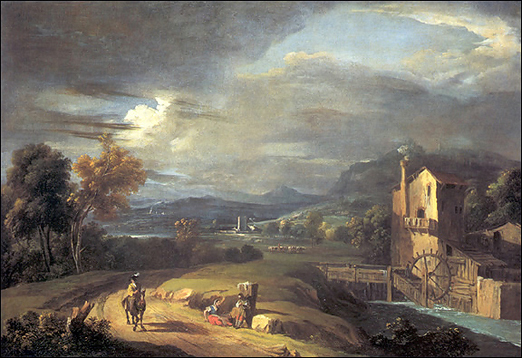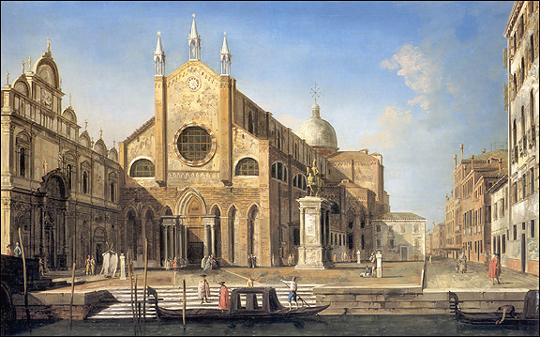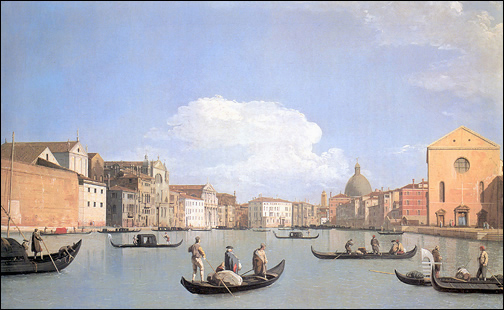The Grand Tour: Landscape & Veduta Paintings Venice & Rome in the 18th Century
April 29 – October 5, 1997
 The artistic involvement with painting the landscape was an extension of the Age of Enlightenment. As man’s interest in himself increased, so did his interest in the immediate and ordinary world around him.
The artistic involvement with painting the landscape was an extension of the Age of Enlightenment. As man’s interest in himself increased, so did his interest in the immediate and ordinary world around him.
Although the 18th-century Italian landscapes were studio works, they were based on accurate on-the-spot drawings and oil sketches. In effect, these artists became the precursors of what was to develop as one of the most popular aspects of Western culture, which came to a heightened peak with Impressionism. This trend of painting landscapes that were not structured, classical, balanced and theoretical originated with the vedette or “view” paintings that were a type of naturalistic landscape and cityscape painting made popular in the 18th century.
Canaletto, Panini and others created commissioned images for the well-to-do travelers of the day, to remind themselves, and perhaps more importantly, others, of the adventures they were able to take. This was part of the extensive booty that came to England in the age of the Empire, and made London one of the wealthiest cities of the world. The “room with a view” mentality was part of English culture. Italy became one of the most popular places to visit, because it was warm in climate and in relationships, and this trend resulted in a romanticism that captured the imagination from the 18th through the 20th centuries. This was the ideal escape for the English, who suffered from physical problems of cold and rainy winters, and psychological problems of Victorian restraint.
This splendid exhibition grew out of an interest and a passion for one of the most exciting aspects of culture — a creative thought brought to fruition.
Selected highlights:
















